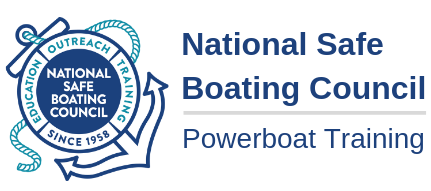BASIC NAVIGATION AND PILOTING
This two-day class is for everyone from novice to experienced boaters looking for formal training in piloting and navigation. Students receive lecture and hands-on training utilizing charts, plotting tools, government publications and workbook exercises. Upon completion of the class, students are able to plot a course, create a route log, plot their position by various types of fixes, calculate time, speed & distance, and perform set and drift vectors. Participants learn the same techniques used in the plotting module of the USCG deck officer license exam.
Topics:
Chart orientation
Use of government publications such as:
Tide Tables
Tidal Current Tables
Light List
Coast Pilot
Notice to Mariners
Navigation Rules
Chart No. 1
Plotting positions
Creating routes
Plotting three-bearing fixes, running fixes and electronic fixes
Understanding aids to navigation
Rules of the Road
Trip planning (use of cruising guides, planning fuel stops, etc.)
Dead Reckoning
Time, speed and distance
Set and drift vectors
The charts, publications, plotting tools and calculators are provided for use in class. However, students are encouraged to bring their own plotting tools.
NAVIGATION II: iNavigation
Modern integrated navigation calls for the mariner to blend traditional navigation skills with the use and knowledge of sophisticated networked electronic aids. This two-day (12-hour) class is focused on marrying paper chart navigation with electronic navigation systems, tablets and smart phones. Students will receive lecture, demonstration and hands-on training that utilizes the Annapolis School of Seamanship bridge simulator. The simulator allows students to engage in a virtual voyage in all weather conditions and can interface with tablet based navigation systems such as iNavx®.
Students for this class must have previously taken Basic Navigation or have a solid foundation in traditional paper chart navigation and plotting.
Topics:
Electronic Navigation Basics
GPS Chartplotter, Radar, and AIS
Relative Motion, Collision Avoidance, ARPA, VRM, and EBL on a radar display
Tablet and phone based navigation using iNavx® and other mobile apps
Fully integrated navigation experience using our full-size ship simulator
INTRODUCTION TO CELESTIAL NAVIGATION
In this 12-hour celestial navigation class, students receive both lecture and hands-on instruction utilizing a sextant, the Nautical Almanac, sight reduction tables and calculator. This course provides boaters with an overview of the celestial sky and a practical method for finding their position at sea without depending on GPS.
Topics:
Introduction to the celestial triangle (GP, LHA, Dec, AP)
Relating time and arc
Measuring altitude and recording time
Taking Sights with a Sextant
Using the Nautical Almanac & Publication 229 (Sight Reduction Tables)
Reducing Sights by Calculator Method
Celestial Body Identification


